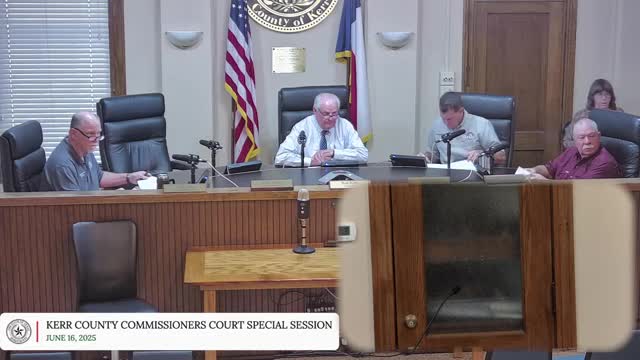Kerr County Officials Discuss Proposal for Federal Migrant Child Placement Facility
June 18, 2025 | Kerr County, Texas
This article was created by AI summarizing key points discussed. AI makes mistakes, so for full details and context, please refer to the video of the full meeting. Please report any errors so we can fix them. Report an error »

The Kerr County Commissioners Court held a significant session on June 16, 2025, focusing on the potential establishment of a new facility for youth placements. The meeting addressed the implications of a proposed facility that would cater to federal placements of migrant children, diverging from previous discussions centered on Texas adjudicated youth.
The court began by revisiting past decisions regarding the placement of juveniles, emphasizing a preference against housing Texas Juvenile Justice Department (TJJD) youth in Kerr County. The commissioners expressed concerns about the potential risks associated with bringing in adjudicated juveniles, particularly regarding community safety and the increased burden on local judicial resources.
A key point of discussion was the nature of the proposed facility, which would not be limited to Texas youth but could include children from across the country, potentially undocumented migrants. This raised questions about the facility's operational capacity and the health care implications for the sheriff's budget, as juvenile health care costs are a significant expense.
Commissioners deliberated on the facility's capacity, with suggestions that it could accommodate around 48 beds, though operational preferences leaned towards a lower number to ensure manageable logistics. The conversation highlighted the need for careful consideration of the facility's design and operational guidelines to mitigate risks associated with housing a diverse population of youth.
The court also discussed the importance of involving experts in the Request for Proposal (RFP) process, particularly individuals familiar with federal requirements, to ensure that the facility meets necessary standards and addresses community concerns effectively.
In conclusion, the meeting underscored the complexities of establishing a youth placement facility in Kerr County, balancing the needs of federal programs with local community safety and resource management. The court plans to continue discussions on the RFP and the specific restrictions that may be necessary to align with community values and safety standards.
The court began by revisiting past decisions regarding the placement of juveniles, emphasizing a preference against housing Texas Juvenile Justice Department (TJJD) youth in Kerr County. The commissioners expressed concerns about the potential risks associated with bringing in adjudicated juveniles, particularly regarding community safety and the increased burden on local judicial resources.
A key point of discussion was the nature of the proposed facility, which would not be limited to Texas youth but could include children from across the country, potentially undocumented migrants. This raised questions about the facility's operational capacity and the health care implications for the sheriff's budget, as juvenile health care costs are a significant expense.
Commissioners deliberated on the facility's capacity, with suggestions that it could accommodate around 48 beds, though operational preferences leaned towards a lower number to ensure manageable logistics. The conversation highlighted the need for careful consideration of the facility's design and operational guidelines to mitigate risks associated with housing a diverse population of youth.
The court also discussed the importance of involving experts in the Request for Proposal (RFP) process, particularly individuals familiar with federal requirements, to ensure that the facility meets necessary standards and addresses community concerns effectively.
In conclusion, the meeting underscored the complexities of establishing a youth placement facility in Kerr County, balancing the needs of federal programs with local community safety and resource management. The court plans to continue discussions on the RFP and the specific restrictions that may be necessary to align with community values and safety standards.
View full meeting
This article is based on a recent meeting—watch the full video and explore the complete transcript for deeper insights into the discussion.
View full meeting
